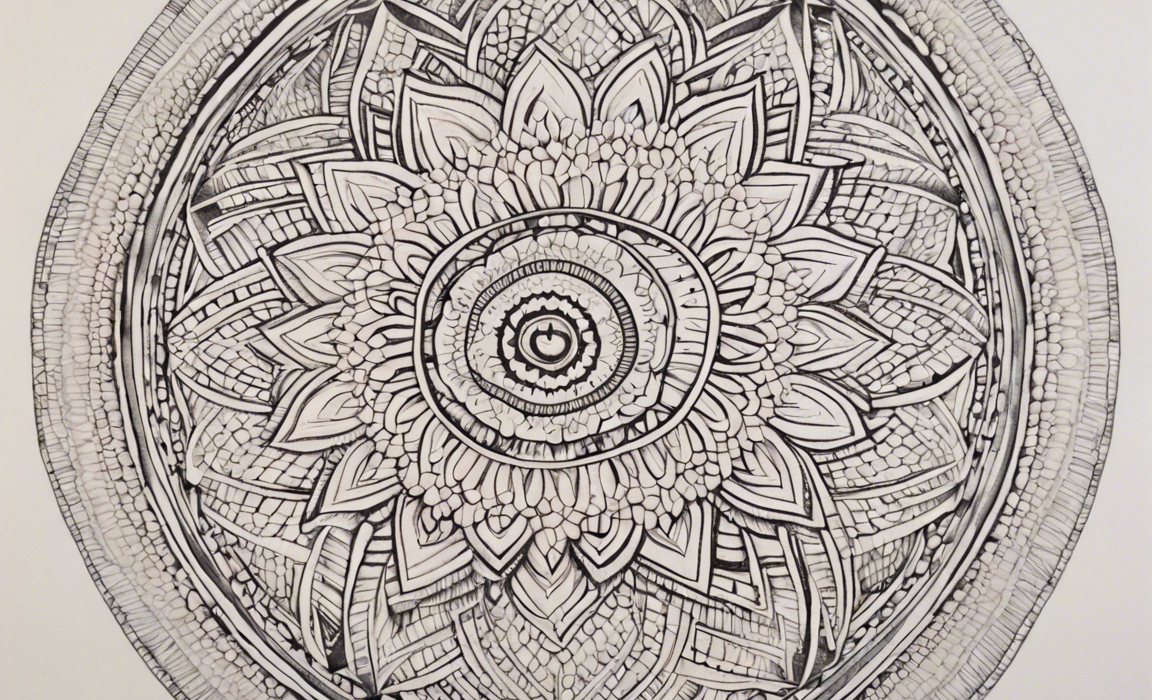Mandala drawing is a powerful tool for unlocking creativity, reducing stress, and promoting mindfulness. The practice of creating mandalas, which are intricate geometric patterns, has been used for centuries in various cultures around the world as a form of meditation and self-expression. In this article, we will explore the benefits of mandala drawing, how to create your own mandalas, and tips for incorporating this practice into your daily routine.
What is a Mandala?
A mandala is a circular geometric pattern that represents the universe in Hindu and Buddhist symbolism. The word “mandala” is derived from the Sanskrit word for circle. Mandalas are often used as a spiritual tool for meditation and reflection. The intricate designs of mandalas are believed to help focus attention and aid in concentration.
Benefits of Mandala Drawing
-
Reduces Stress: Engaging in the meditative process of creating mandalas can help reduce stress and anxiety by promoting relaxation and mindfulness.
-
Promotes Creativity: Drawing mandalas can help unlock your creativity and inspire new ideas. The repetitive nature of creating mandalas can help you tap into your inner creativity.
-
Enhances Focus: The intricate patterns of mandalas require focus and concentration, which can help improve your attention span and mental clarity.
-
Self-Expression: Mandalas provide a creative outlet for self-expression and can be a reflection of your inner thoughts and emotions.
How to Create Your Own Mandala
-
Gather Your Supplies: You will need paper, a pencil, a ruler, and colored pencils or markers for creating your mandala.
-
Start with a Circle: Use a compass or trace a circular object to create the base of your mandala.
-
Divide the Circle: Use a ruler to divide the circle into sections or segments. You can start with simple divisions like four or eight sections.
-
Create Patterns: Begin filling in each section with patterns, shapes, and designs. You can experiment with symmetry, repetition, and intricate details.
-
Add Colors: Once you have completed your patterns, use colored pencils or markers to add color to your mandala. Be creative and use a color scheme that resonates with you.
-
Finishing Touches: Once you are satisfied with your design, you can add final touches or embellishments to enhance your mandala.
Tips for Mandala Drawing
-
Start Simple: If you are new to mandala drawing, start with simple designs and patterns before experimenting with more complex shapes.
-
Practice Mindfulness: Focus on the present moment while creating your mandala. Let go of distractions and immerse yourself in the creative process.
-
Experiment with Colors: Don’t be afraid to play with different color combinations and shades to bring your mandala to life.
-
Use Templates: There are plenty of mandala templates available online that you can print and color. This can be a helpful starting point for beginners.
-
Set Aside Time: Carve out dedicated time in your schedule for mandala drawing to make it a regular practice.
Frequently Asked Questions (FAQs)
-
What is the significance of different colors in mandalas?
Different colors in mandalas can represent various emotions, qualities, or elements. For example, blue can symbolize calmness and serenity, while red can represent energy and passion. -
Can anyone create mandalas, or do you need to be an artist?
Anyone can create mandalas! You don’t need to be an artist to enjoy the process of mandala drawing. It’s a form of self-expression and creativity that anyone can practice. -
How can mandala drawing benefit mental health?
Mandala drawing can benefit mental health by promoting relaxation, reducing stress, improving focus, and providing a creative outlet for self-expression. -
Are there different types of mandalas?
Yes, there are various types of mandalas, including traditional Tibetan mandalas, contemporary geometric mandalas, and nature-inspired mandalas. Each type has its unique symbolism and design elements. -
Can mandala drawing be used as a form of therapy?
Yes, mandala drawing is often used in art therapy as a way to explore emotions, reduce anxiety, and promote mindfulness. It can be a therapeutic tool for self-discovery and healing.
In conclusion, mandala drawing is a versatile and engaging practice that can help unlock your creativity, reduce stress, and promote mindfulness. Whether you are looking for a new hobby or seeking a therapeutic outlet, incorporating mandala drawing into your daily routine can bring a sense of calm and inspiration to your life. Start your mandala journey today and explore the infinite possibilities of this ancient art form.






